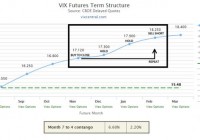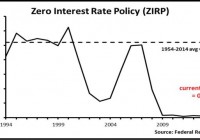Pursuing Smart Beta: Multi-Factored ETFs
Summary Both iShares and Global X have recently issued ETFs based on selecting holdings using complex systems of implementing “smart beta.” iShares’ “FactorSelect” funds use a complex system of factors to select high-quality holdings. Global X’s “Scientific Beta” funds use a complex weighting system to develop a portfolio that will perform optimally. In June, I wrote about the iShares FactorSelect MSCI International ETF (NYSEARCA: INTF ), an ETF with an inception date of April 28, 2015. 1 iShares introduced four other funds on that same date: the iShares FactorSelect MSCI Intl Small-Cap ETF (NYSEARCA: ISCF ), the iShares FactorSelect MSCI Global ETF (NYSEARCA: ACWF ), the iShares FactorSelect MSCI USA ETF (NYSEARCA: LRGF ) and the iShares FactorSelect MSCI USA Small-Cap ETF (NYSEARCA: SMLF ); as the names would suggest, all of the funds have something in common: they are based on the FactorSelect strategy. Shortly after the iShares releases (May 12, to be exact), Global X Funds issued four ETFs of its own: the Global X Scientific Beta U.S. ETF (NYSEARCA: SCIU ), the Global X Scientific Beta Europe ETF (NYSEARCA: SCID ), the Global X Scientific Beta Asia ex-Japan ETF (NYSEARCA: SCIX ), and the Global X Scientific Beta Japan ETF (NYSEARCA: SCIJ ). Again, as the names suggest, all four ETFs are based on the same ( Scientific Beta ) strategy. Both series of funds represent efforts by their respective issuers to provide investors with a “bridge” between – or perhaps better: an alternative to – actively managed funds and purely passive funds. 2 I thought it might be interesting to take a look at the two sets of offerings and their underlying strategies; there are interesting similarities between the approaches, as well as some significant differences. FactorSelect BlackRock’s (NYSE: BLK ) approach to Smart Beta involves a (proprietary) model that selects companies for a given fund on the basis of four factors: 3 Value : a score is derived from a company’s valuation, using measures such as price/book value, forward share price to earnings, enterprise value to operating cash flow, etc. Quality : a score is computed using a company’s metrics (return on equity, debt/equity, earnings variability, etc.). Momentum : the score is a composite of the security’s relative performance against the global market (for two years), and against securities based in the same country (for six months and twelve months). Low Size : the score is a measure of a company’s market capitalization compared to companies based in the same country. The final score is a composite of the four factors, which are modified-capitalization weighted. The funds are rebalanced/reconstituted semi-annually. Scientific Beta As with BlackRock, Global scores its potential holdings on the basis of four factors, although each factor has a single definition, rather than being an aggregate of several “sub-factors.” 4 , 5 Thus: Value : Price to Book Size : Market Capitalization Low Volatility : 104-week historical volatility Momentum : last 52-week total return, excluding most recent month. Unlike BlackRock’s modified-cap-weighting scheme for its factors, Global employs a more complex weighting system incorporating five schemes: 6 Maximum Deconcentration : equal weights to minimize firm-specific risk. Maximum Decorrelation : minimizes volatility based on historical correlations between holdings. Diversified Risk Weighted : volatility and weight are inversely correlated (greater volatility gets lesser weight) Efficient Minimum Volatility : minimize portfolio volatility based on both correlations and volatilities. Efficient Maximum Sharpe Ratio : maximize risk-adjusted performance based on expected returns and volatilities. The funds are rebalanced/reconstituted quarterly. Comparison In essence, both sets of funds mimic an actively managed fund by introducing complex selection and weighting criteria. The use of complex criteria adds a discretionary element to holdings selection, while at the same time providing the same level of transparency that is typical of an index fund. The difference between the two sets of holdings is in the focus of the complexity they introduce, with iShares introducing the complexity in the scoring factors and Global using a complex weighting schema. I will argue that while their approaches are different, the results may – at least intuitively – be quite similar. 7 Factors Both sets of funds look at a company’s size , value and momentum . Where they differ, iShares factor involves data reflecting a company’s quality , while Global factors the volatility of a company’s stock. But even where the two series “agree,” the agreement is in name only. Global defines its factors very narrowly, choosing a single characteristic, ratio or formula for each factor, while the iShares funds’ factors are complex aggregates. The difference in factor composition is perhaps most starkly exhibited in terms of stock value . It is difficult to accept that one can determine the valuation of a company on a single metric, particularly price-to-book. 8 Finding a realistic way to combine a set of valuation data to arrive at a reasonable value seems more adequate. Both funds incorporate size in their factoring, where they seek to avoid selecting large companies. Statistically, smaller companies realize more growth than large companies do, so in the interest of maximizing portfolio growth potential both fund series place greater value on the smaller companies. It is with regard to size that both companies structure their portfolios differently. iShares divides its FactorSelect funds according to U.S., ex-U.S. Developed, and Global focuses, with the first two subdivided between large- and mid-cap portfolios on the one hand, and small cap portfolios on the other. Global structures its four portfolios to include all market caps in each. Momentum is an interesting case, with Global focusing on a company’s total returns over 52 weeks, while iShares considers a company’s performance in relation to ((a)) global stocks over two years, and ((b)) same-country companies over six- and 12- month periods. Thus, while Global is looking at each company individually, iShares evaluates companies in the context of global and national trends – a more dynamic picture of how well a company is doing. I must admit to a little dismay that Global does not take fundamentals into account. One of iShares’ factors (quality) is essentially a composite of a company’s fundamental data, and would seem to be (at least to my view) much more important in evaluating a company’s prospects than low volatility, which replaces fundamentals in the Global schema. Moreover, and as we will see next, volatility plays an important role in Global’s weighting schema – using it in two phases of its selection process would seem excessive to its overall importance. Weighting Comparison While iShares’ factors are complex aggregates, the series becomes somewhat one dimensional in terms of its weighting system, which is a “modified market-cap weighting,” the weight a holding receives being its capitalization influenced by its overall factor score. Global’s factors may be one dimensional, but its weighting system is decidedly not. Global’s five-element weighting process is designed to identify correlations and volatilities in its portfolio, adjusting the weighting of its holdings (from an initial equalized weighting) to compensate for intra-portfolio correlations and minimize overall portfolio volatility. Finally, weighting is adjusted according to the companies’ Sharpe Ratios. Assessment In general, the primary difference between the two sets of funds seems to be that the iShares FactorSelect funds have portfolios that are constituted very selectively, while the Global X Scientific Beta funds have portfolios that are balanced for optimal performance. It will be interesting to see which series fares better over time from this perspective, but I do not see enough significance in this difference to recommend one series over the other. 9 Both systems are crafted to produce a portfolio that should exhibit excellent growth patterns, although they accomplish that goal differently. What is significant is the focus of each fund in both series. Global has developed funds that are geographically specific – one for the U.S., one for Europe, one for Japan and one for “non-Japan” Asia. If the investor is interested in a nicely balanced portfolio for a specific region, the Scientific Beta series makes for an attractive option. The iShares funds, on the other hand, constitute very selective groups of companies that provide excellent growth potential – at least, in principle. The funds are differentiated according to the extent of that potential: the relative safety of mid- to large-capped holdings or the greater potential growth of small caps; they are further differentiated by whether the holdings are domestic or international. The investor is choosing an equity category only broadly differentiated regionally. As I mentioned in my article on INTF, I have been really reluctant to commit to an international ETF. INTF is the first fund that has appealed to me in terms of its selectiveness and the range of its holdings. The fund has enabled me to add solid international holdings to my portfolio while making me feel confident that the foreign holdings are high quality companies with good growth prospects. Disclaimers This article is for informational use only. It is not intended as a recommendation or inducement to purchase or sell any financial instrument issued by or pertaining to any company or fund mentioned or described herein. All data contained herein is accurate to the best of my ability to ascertain, and is drawn from the Company’s Prospectus, Statement of Additional Information, and fact sheets. Data from any other sources (if used) is cited as such. All opinions contained herein are mine unless otherwise indicated. The opinions of others that may be included are identified as such and do not necessarily reflect my own views. Before investing, readers are reminded that they are responsible for performing their own due diligence; they are also reminded that it is possible to lose part or all of their invested money. Please invest carefully. 1 ” INTF: An Ideal Basket Of International Equities ,” Seeking Alpha , June 9, 2015. 2 Both companies specify that their strategies are intended to provide viable alternatives to actively managed funds while outperforming the simple indexed funds. 3 These factors are described in detail in the prospectuses(under “Principal Investment Strategies”) for each of the funds. All five funds apply the same factors, each fund applying them to a specific regions/market capitalization. The calculations in the model are proprietary to MSCI, which develops the underlying index for the funds. 4 Global X Scientific Beta ETFs Family Guide , available here . 5 A detailed discussion of the construction of the indices used by Global X can be found in ERI Scientific Beta Equity Strategy Construction Rules , by the EDHEC-Risk Institute . 6 Scientific Beta ETFs Family Guide . 7 Similar, at least, in terms of ultimate approach, although not necessarily in terms of actual portfolio content. 8 I am a big fan of price-to-book value. It is a great indicator of value, and I regularly look at companies that have P/Bs less than 1 – these are companies where the value of the actual assets of the company exceed the value of the shares. In the event of a bankruptcy, shareholders of such a company would, in principle, receive more money for their shares than they paid. However, I would not rely on P/B as the determinant of a company’s overall value. 9 Actually, I do, but it is a matter of personal preference, rather than rigorous analysis. The FactorSelect process seems more comprehensive, indicating a greater level of sensitivity to the strength (both fundamental and displayed) of the companies of which the portfolio is comprised, while the Global X Scientific Beta system – while rich in its weighting system – seems rather sparse in selectiveness. The result of the latter system is a portfolio that may be well-balanced, but I am less confident in the components of that portfolio. Disclosure: I am/we are long INTF. (More…) I wrote this article myself, and it expresses my own opinions. I am not receiving compensation for it (other than from Seeking Alpha). I have no business relationship with any company whose stock is mentioned in this article.

